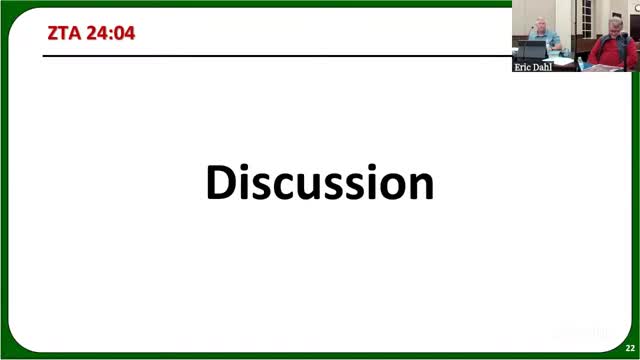Heated debate over solar zoning regulations intensifies
October 17, 2024 | Fluvanna County, Virginia
This article was created by AI summarizing key points discussed. AI makes mistakes, so for full details and context, please refer to the video of the full meeting. Please report any errors so we can fix them. Report an error »

In a recent government meeting, officials engaged in a heated discussion regarding proposed zoning regulations for solar energy projects, particularly focusing on setback requirements and community concerns. The debate centered around the implications of a 500-foot setback from various property lines, which some officials argued could severely limit the feasibility of solar installations.
One board member emphasized that the 500-foot requirement would create significant challenges in identifying suitable land for solar projects, suggesting that such stringent regulations could deter potential developers and ultimately hinder the community's access to renewable energy. This sentiment was echoed by others who expressed frustration over the potential for excessive restrictions that could lead to a lack of interest from developers.
The conversation also highlighted the voices of local residents, with some officials referencing numerous calls and letters from constituents expressing their concerns about the proposed regulations. They argued that the community's expectations should guide the decision-making process, advocating for a more reasonable approach to setbacks that would still protect local interests without stifling development.
As the discussion progressed, a motion was made to amend the proposed ordinance by removing the 3% cap on utility-scale solar generation facilities and adjusting the setback requirements. This motion sparked further debate about the necessity of starting with strict regulations versus the flexibility to adjust them later based on project specifics.
Concerns were raised about the potential economic impact of the regulations, particularly regarding electricity rates for residents. One official pointed out that the local electric cooperative had warned that the proposed regulations could lead to increased rates for consumers, raising questions about the overall benefits of the solar projects.
Ultimately, the board voted in favor of the amended motion, which passed with a 4-1 majority. The decision reflects a commitment to balancing community concerns with the need for sustainable energy solutions, although the path forward remains complex as officials continue to navigate the intricacies of zoning laws and public sentiment. The meeting concluded with plans for further discussions on related topics, including regulations concerning dangerous and vicious dogs, indicating a busy agenda ahead for the board.
One board member emphasized that the 500-foot requirement would create significant challenges in identifying suitable land for solar projects, suggesting that such stringent regulations could deter potential developers and ultimately hinder the community's access to renewable energy. This sentiment was echoed by others who expressed frustration over the potential for excessive restrictions that could lead to a lack of interest from developers.
The conversation also highlighted the voices of local residents, with some officials referencing numerous calls and letters from constituents expressing their concerns about the proposed regulations. They argued that the community's expectations should guide the decision-making process, advocating for a more reasonable approach to setbacks that would still protect local interests without stifling development.
As the discussion progressed, a motion was made to amend the proposed ordinance by removing the 3% cap on utility-scale solar generation facilities and adjusting the setback requirements. This motion sparked further debate about the necessity of starting with strict regulations versus the flexibility to adjust them later based on project specifics.
Concerns were raised about the potential economic impact of the regulations, particularly regarding electricity rates for residents. One official pointed out that the local electric cooperative had warned that the proposed regulations could lead to increased rates for consumers, raising questions about the overall benefits of the solar projects.
Ultimately, the board voted in favor of the amended motion, which passed with a 4-1 majority. The decision reflects a commitment to balancing community concerns with the need for sustainable energy solutions, although the path forward remains complex as officials continue to navigate the intricacies of zoning laws and public sentiment. The meeting concluded with plans for further discussions on related topics, including regulations concerning dangerous and vicious dogs, indicating a busy agenda ahead for the board.
View full meeting
This article is based on a recent meeting—watch the full video and explore the complete transcript for deeper insights into the discussion.
View full meeting
